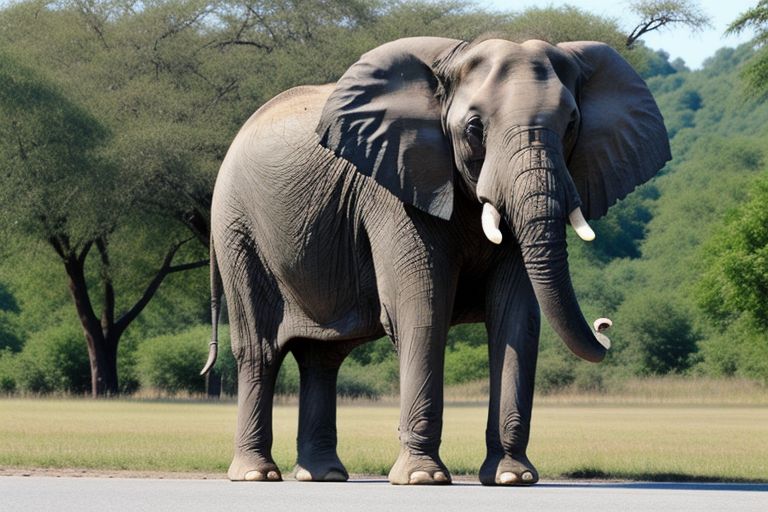In the heart of Africa, amidst the sprawling savannahs and dense forests, lived Ahmed, an elephant whose story became a legend. Known for his majestic tusks and gentle demeanor, Ahmed the Elephant captivated the hearts of many around the world. This article delves deep into the life of Ahmed, exploring his significance in the animal kingdom and the conservation efforts sparked by his existence. Join us on this journey through the life of Ahmed, a true testament to the beauty and resilience of nature.
The Legend of Ahmed: An Introduction
Ahmed, often referred to as the “King of Marsabit,” was a magnificent African elephant who roamed the Marsabit National Park in Kenya. His fame was not just due to his impressive size and striking tusks, which were rumored to touch the ground, but also his survival through a period when poaching was rampant. Ahmed became a symbol of conservation, embodying the struggle and beauty of Africa’s wildlife.
The Early Years: A Giant is Born
Born in the early 20th century, Ahmed quickly grew to be a formidable presence in the Kenyan wilderness. His early years were marked by the typical explorations and learning curves of a young elephant, but even then, his tusks were noticeably larger than those of his peers, hinting at the legend he was to become.
A Symbol of Conservation
In 1970, in an unprecedented move, the then-President of Kenya, Jomo Kenyatta, declared Ahmed a national treasure, assigning him 24-hour protection by armed guards. This decision highlighted the growing concerns over poaching and the need for conservation efforts to protect such magnificent creatures.
The Habitat of Ahmed: Marsabit National Park
Marsabit National Park, a haven of biodiversity, served as the backdrop to Ahmed’s life. This section of Kenya is known for its lush forests and diverse wildlife, providing a perfect habitat for elephants and other species. Ahmed’s presence in Marsabit brought significant attention to the park, aiding in its conservation efforts.
The Legacy of a Gentle Giant
Ahmed’s natural death in 1974 marked the end of an era but also the beginning of a global awakening to the plight of elephants and the need for conservation. His legacy lives on through the Ahmed Elephant Trust, a foundation dedicated to the protection of elephants in Kenya.
Understanding Elephants: Social Structure and Behavior
Elephants are known for their complex social structures and emotional intelligence. This section explores the social dynamics within elephant herds, highlighting the importance of family bonds and communication among these gentle giants.
The Threat of Poaching: A Dark Shadow
Despite efforts to protect them, elephants continue to face threats from poaching, primarily for their ivory tusks. This section discusses the impact of poaching on elephant populations and the ongoing battle against this illegal trade.
Conservation Efforts: Protecting the Future
The story of Ahmed has inspired numerous conservation initiatives aimed at protecting elephants and their habitats. From anti-poaching patrols to community education programs, these efforts are crucial in ensuring that elephants continue to thrive in the wild.
Ahmed’s Tusks: A Tale of Survival
Unlike many of his contemporaries, Ahmed died of natural causes, with his tusks intact. After his death, his body was preserved and is now on display at the National Museum of Kenya, serving as a powerful symbol of survival against the odds.
The Role of Technology in Elephant Conservation
Advancements in technology, including GPS tracking and drone surveillance, are playing a crucial role in monitoring elephant movements and protecting them from poachers. This section explores how technology is aiding in the fight for elephant conservation.
The Importance of Habitat Preservation
The preservation of natural habitats is vital for the survival of elephants and other wildlife. This section discusses the challenges and solutions related to habitat preservation, including the role of national parks and protected areas.
Engaging Communities in Conservation
Local communities play a crucial role in conservation efforts. By involving communities in the protection of wildlife, sustainable solutions can be found that benefit both humans and animals.
The Future of Elephants: Hope and Challenges
As we look to the future, the story of Ahmed reminds us of the challenges facing elephants and the importance of continued conservation efforts. This section reflects on the hope for a future where elephants roam free and safe in their natural habitats.
Conclusion
Ahmed the Elephant’s story is a poignant reminder of the beauty and fragility of the natural world. His legacy continues to inspire conservation efforts, ensuring that the gentle giants of the earth are protected for generations to come. As we reflect on Ahmed’s life, let us commit to the preservation of wildlife.


